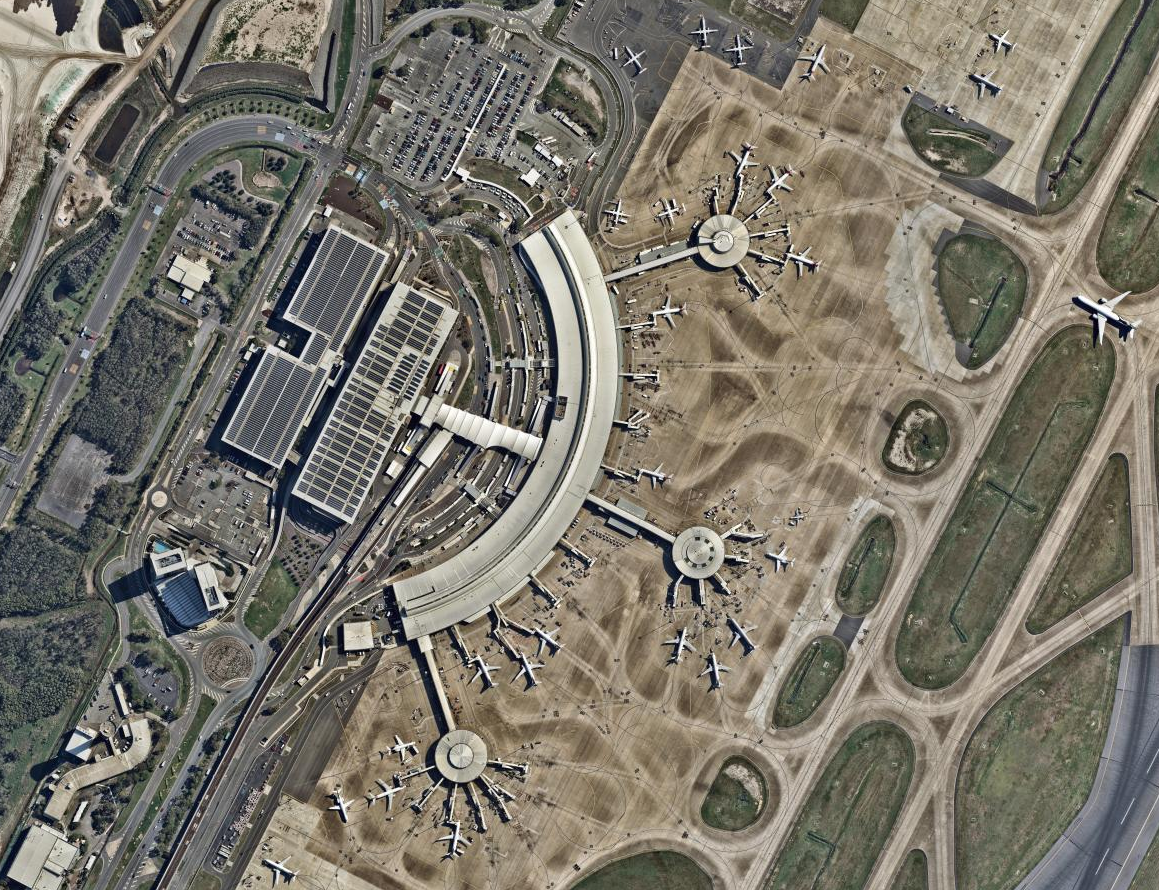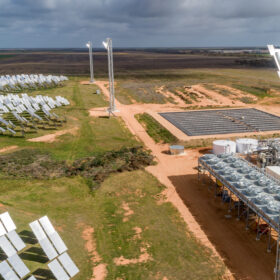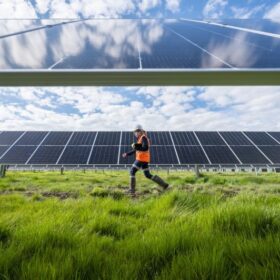As the electrification of transport ramps up, aviation has come under renewed pressure to plan its path away from fossil fuels. While precisely how aircrafts themselves will reduce their emissions remains unclear, airports are heaping to solar to meet the 2030 net zero targets over 100 global airports have already committed to.
Some of the ideas being floated include solar runways as well as introducing solar pavements in the “dead zones” between where aircrafts park at the gates. Both “gimmicks” in the sense such projects are conceptual and still a long way from reality, Ken Conway from aviation consulting company Airbiz said there are far more grounded ways airports are looking to integrate solar today.
Speaking at Smart Aviation Asia Pacific’s event on Tuesday, Conway pointed out instead of a solar runway, which is fairly questionable in terms of strength needed to cope with the dynamic load of landing planes, it’s far more likely solar could be installed on the shoulders, or edges, of runways. For a runway 7.5 metres wide and 3,500 metres long, Conway calculates roughly 50,000 square metres could potentially be used to install solar, which could in turn power lighting systems or other airport operations. “This is where thinking is now starting to ideate itself going forward,” he said.
While Conway described solar pavements in airport dead zones as “star gazing”, he said that introducing solar on top of terminal gates is already a reality. Airports, he added, are now looking at opportunities to introduce green autonomous ramps.
In his course of work, Conway’s now starting to see see airports co-locate 20 MW+ onsite ground solar arrays integrated with “major” battery storage systems which can alone deliver between 30% to 35% of the airport’s electricity demand annually.
In terms of Australian airports, Melbourne has the largest operational solar system with 12.4 MW(DC) of ground mounted solar and 1.8 MW on its rooftop, totally 14.2 MW of capacity. The Melbourne system last year outstripped the previous record holder, Brisbane airport, which has 6 MW of solar, 5 MW of which is installed on its rooftops, while 1 MW is ground mounted.
Speaking at the same event, Dhwaraknath Nagarajan, the electrical project manager at Brisbane Airport, said the Queensland solar array, which is spread over five locations at the airport, has saved both significant amounts of money and carbon emissions in the two plus years it’s been operating. “With solar we were able to defer capital expenditure on what we call the high voltage infrastructure that is required to run the airport electricity network. So we were able to defer $20 to $50 million because the peak load demand was managed by our solar system,” Nagarajan said.
*This article was amended on November 19 to reflect that Melbourne’s Tullamarine solar system has been operational since 2020, making it the largest system installed at an Australian airport
This content is protected by copyright and may not be reused. If you want to cooperate with us and would like to reuse some of our content, please contact: editors@pv-magazine.com.








By submitting this form you agree to pv magazine using your data for the purposes of publishing your comment.
Your personal data will only be disclosed or otherwise transmitted to third parties for the purposes of spam filtering or if this is necessary for technical maintenance of the website. Any other transfer to third parties will not take place unless this is justified on the basis of applicable data protection regulations or if pv magazine is legally obliged to do so.
You may revoke this consent at any time with effect for the future, in which case your personal data will be deleted immediately. Otherwise, your data will be deleted if pv magazine has processed your request or the purpose of data storage is fulfilled.
Further information on data privacy can be found in our Data Protection Policy.